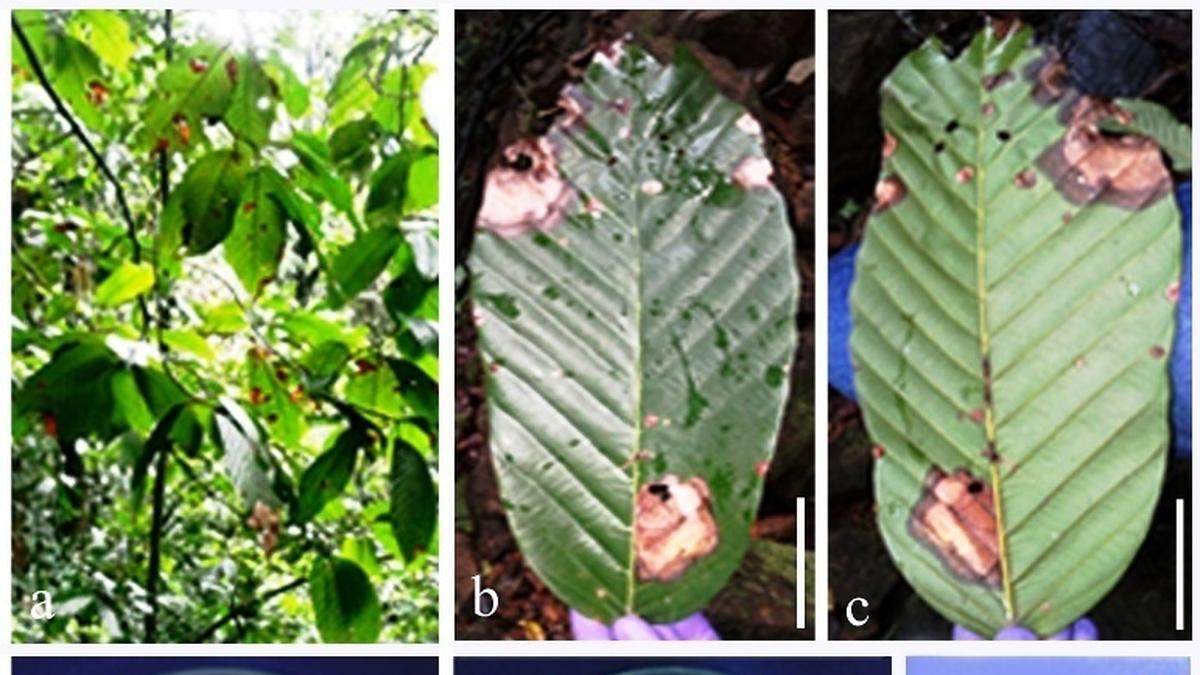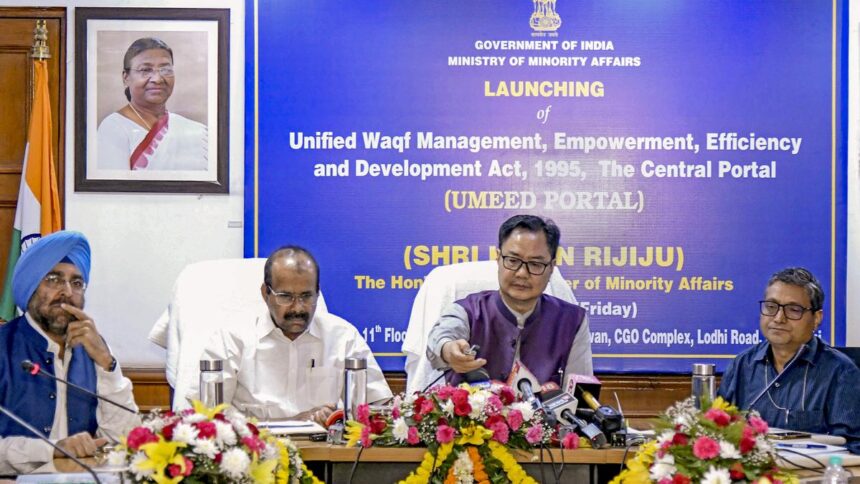
Fungal infection on critically endangered Dipterocarpus bourdillonii, a tree endemic to the Western Ghats.
| Photo Credit: Special Arrangement
Scientists have sounded the alarm on a newly detected fungal disease attacking Dipterocarpus bourdillonii, a critically endangered tree endemic to the Western Ghats. The phytopathogen, Corynespora cassiicola, a highly aggressive fungus, is known to infect more than 530 plant species.
The findings by Shambhu Kumar (Principal Scientist and Head, Forest Pathology Department, Kerala Forest Research Institute, Peechi), along with Raghvendra Singh (Senior Assistant Professor, Department of Botany, Banaras Hindu University, has been published in June 17th edition of Mycosphere journal. This marks the first recorded instance of the pathogen affecting D. bourdillonii, raising serious conservation concerns. The was identified based on morpho-cultural characteristics and molecular phylogenetic evidence.
Detection of the emerging leaf spot and blight disease affecting Dipterocarpus bourdillonii highlight the urgent need for disease surveillance and integrated conservation strategies to protect one of Western Ghat’s most vulnerable rainforest trees.
“Dipterocarpus bourdillonii (family: Dipterocarpaceae) is a critically endangered tree species listed on the IUCN Red List. Endemic to the Western Ghats of India, it plays a vital ecological role in maintaining rainforest canopy structure and supporting biodiversity. Economically, its hardwood is valued for construction and furniture, while its oleoresin (wood oil) has traditional medicinal and industrial uses. Due to overexploitation and habitat loss, the species already faces severe threats. The emergence of this additional biotic threat further underscores the urgent need for conservation measures to protect and restore its dwindling population,” Mr. Kumar said.
The investigation of Corynespora cassiicola infecting Dipterocarpus bourdillonii in Kerala using morpho-molecular tools is of significant importance. Molecular identification ensures accurate pathogen detection, overcoming the limitations of morphology-based methods, and facilitates early diagnosis and monitoring.
This study is crucial for understanding the disease’s epidemiology, guiding effective disease management strategies, and safeguarding this threatened species. Additionally, it contributes to forest health surveillance and supports both ex-situ and in-situ conservation efforts, Mr. Kumar pointed out.
Corynespora cassiicola is a widespread phytopathogen causing leaf spots, target spots, and blight diseases in a wide range of plant species, including economically important crops such as rubber, soybean, tomato, cucumber, cotton, as well as medicinal and ornamental plants. It thrives in warm, humid climates and spreads through conidia (spores produced by fungi) via wind, water, and human activity. The pathogen impairs photosynthesis, leading to defoliation, reduced yield, and plant death in severe cases.
Management of the pathogen involves the use of resistant cultivars, cultural practices (e.g., proper spacing and removal of infected parts), and fungicides such as mancozeb and azoxystrobin. Early detection and integrated disease management are vital to minimising its impact and preventing outbreaks, noted Mr. Kumar.
Published – July 05, 2025 03:31 pm IST






















